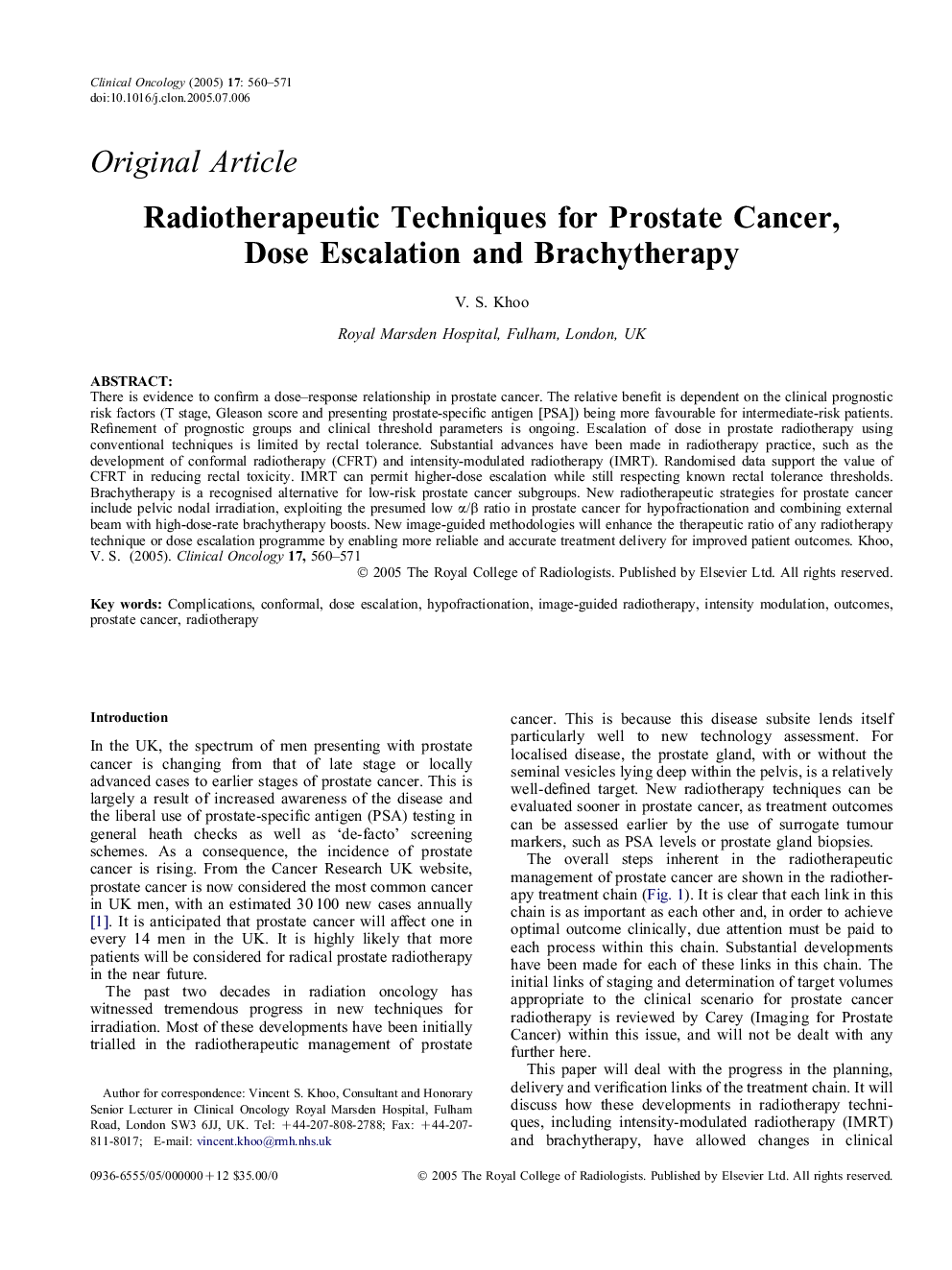| Article ID | Journal | Published Year | Pages | File Type |
|---|---|---|---|---|
| 9601493 | Clinical Oncology | 2005 | 12 Pages |
Abstract
There is evidence to confirm a dose-response relationship in prostate cancer. The relative benefit is dependent on the clinical prognostic risk factors (T stage, Gleason score and presenting prostate-specific antigen [PSA]) being more favourable for intermediate-risk patients. Refinement of prognostic groups and clinical threshold parameters is ongoing. Escalation of dose in prostate radiotherapy using conventional techniques is limited by rectal tolerance. Substantial advances have been made in radiotherapy practice, such as the development of conformal radiotherapy (CFRT) and intensity-modulated radiotherapy (IMRT). Randomised data support the value of CFRT in reducing rectal toxicity. IMRT can permit higher-dose escalation while still respecting known rectal tolerance thresholds. Brachytherapy is a recognised alternative for low-risk prostate cancer subgroups. New radiotherapeutic strategies for prostate cancer include pelvic nodal irradiation, exploiting the presumed low α/β ratio in prostate cancer for hypofractionation and combining external beam with high-dose-rate brachytherapy boosts. New image-guided methodologies will enhance the therapeutic ratio of any radiotherapy technique or dose escalation programme by enabling more reliable and accurate treatment delivery for improved patient outcomes.
Keywords
Related Topics
Health Sciences
Medicine and Dentistry
Oncology
Authors
V.S. Khoo,
